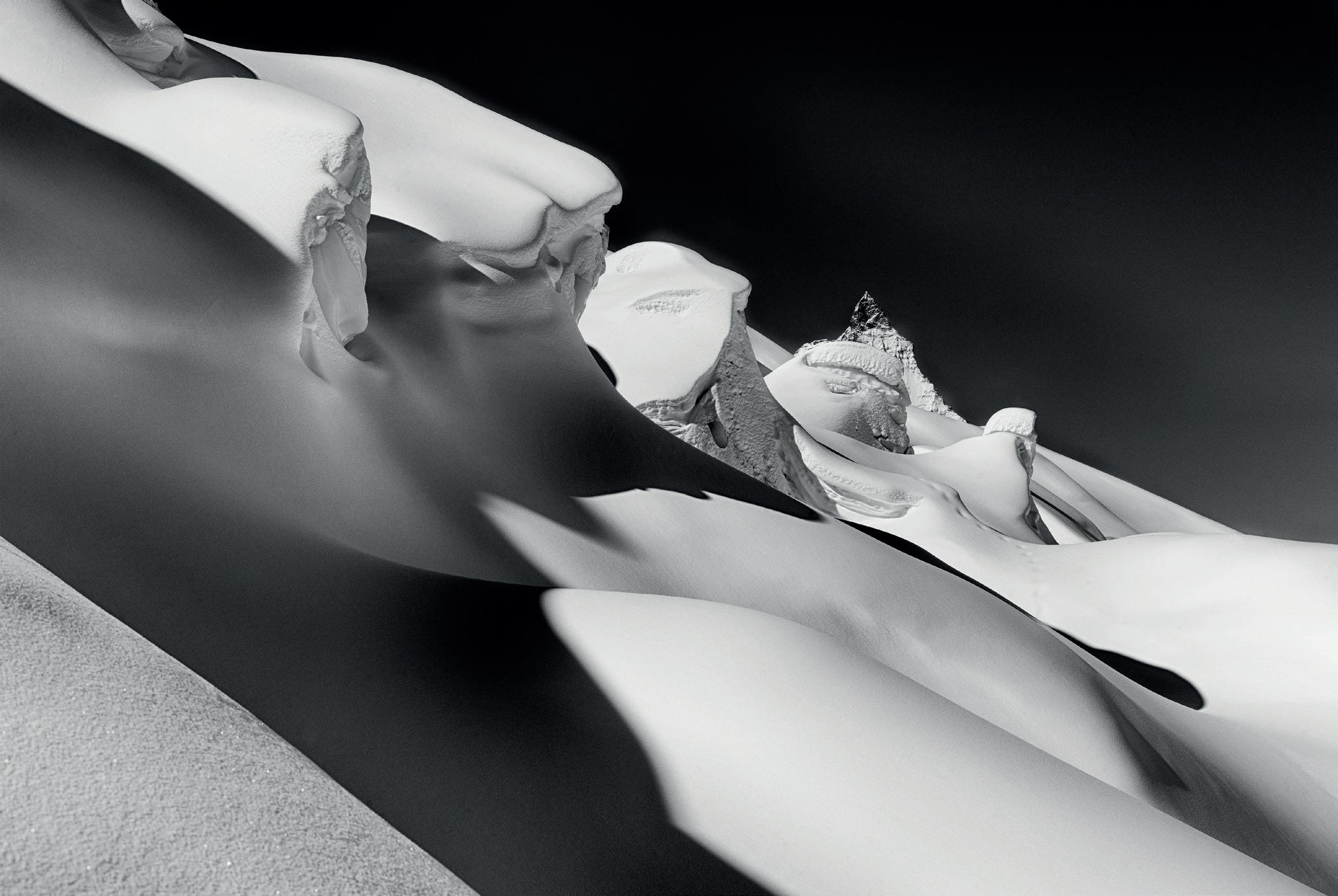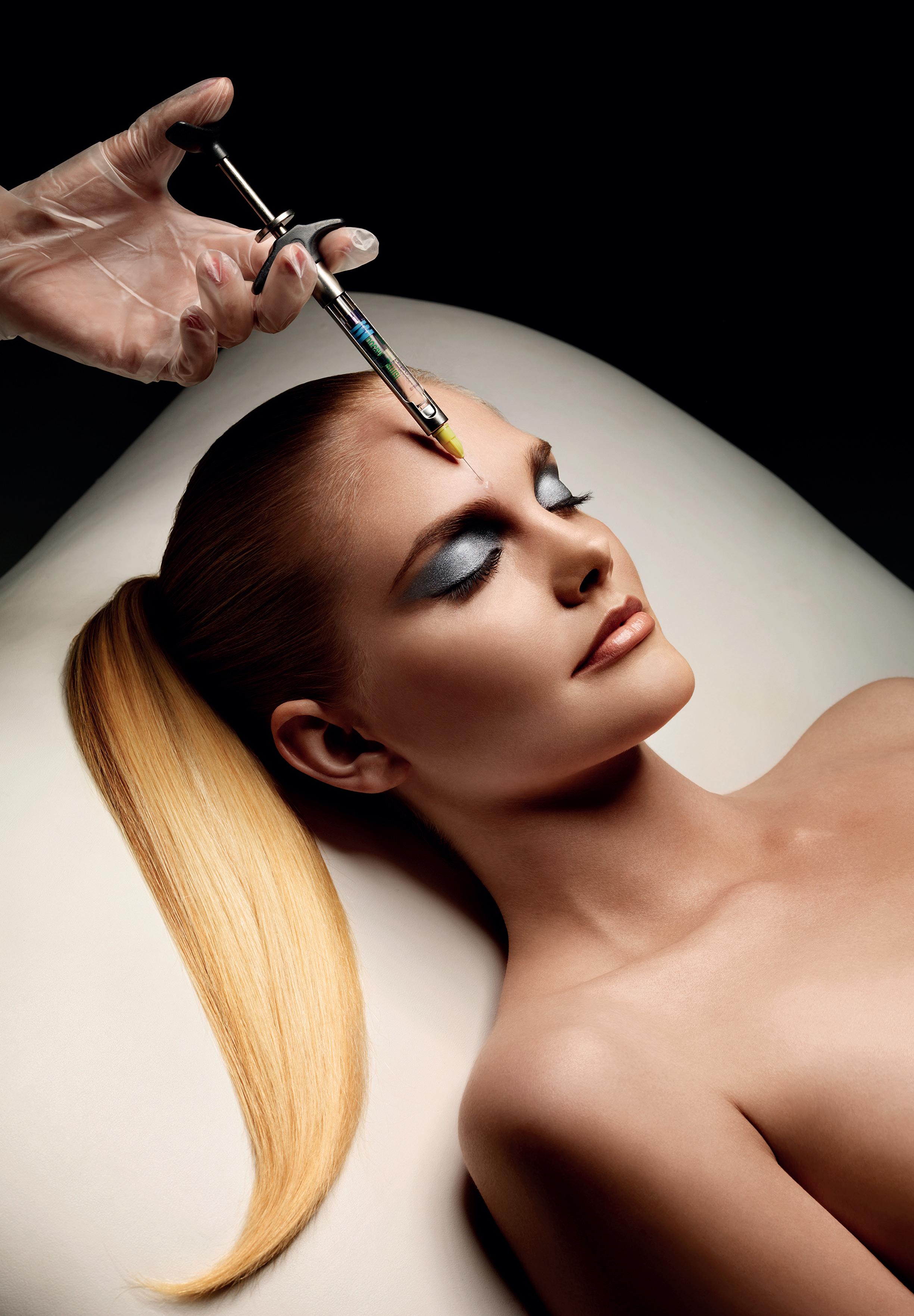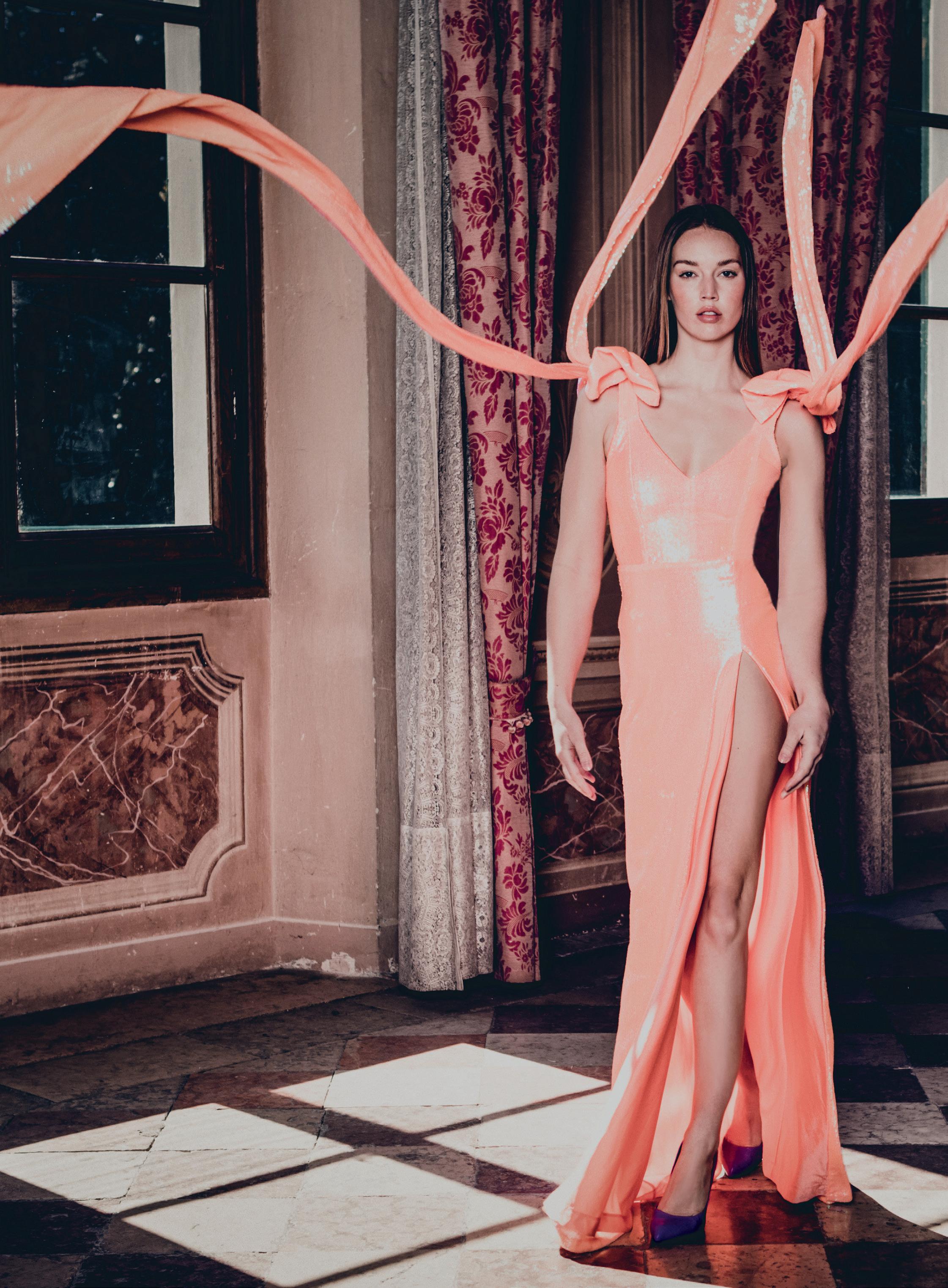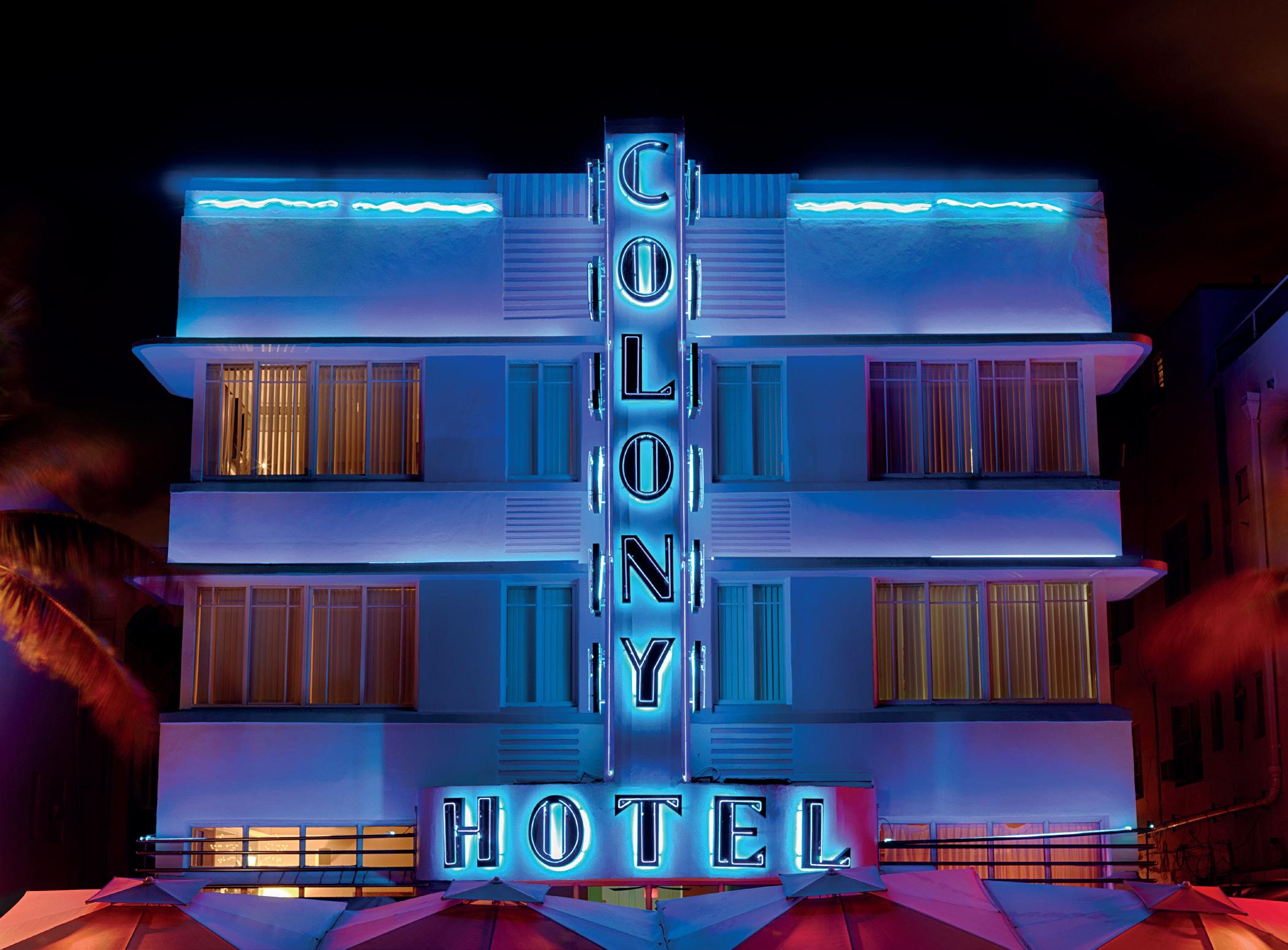
15 minute read
MORTEN QVALE THE TECHNIQUE, THE LIGHT, THE QUALITY
from GATE mag - n° 29
by GATEmagIta
THE GREAT NORWEGIAN PHOTOGRAPHER TALKS TO GATE AND EXPLAINS: “I BELIEVE THAT A GOOD COMPOSITION COMES FROM WITHIN: IT’S ABOUT HAVING A UNIQUE PERSPECTIVE AND BEING WILLING TO THINK OUTSIDE THE BOX. ULTIMATELY, I BELIEVE ANYONE CAN BECOME A GREAT PHOTOGRAPHER WITH THE RIGHT MINDSET, DEDICATION, AND WILLINGNESS TO LEARN AND EXPERIMENT.”
Alcuni fotografi hanno iniziato come assistenti, altri fotografando ad esempio i propri figli, come hai iniziato la tua carriera?
La mia carriera nella fotografia di moda è iniziata in un modo unico. Ho studiato grafica e nel 1983 ho fondato la prima rivista di moda internazionale della Norvegia, TIQUE. In qualità di redattore della rivista, ho assunto alcuni dei migliori fotografi di moda dell’epoca, tra cui Bill King, Guy Bourdin, Terence Donovan e Knut Bry, per realizzare per la nostra pubblicazione. Ho avuto l’opportunità di lavorare a stretto contatto con questi fotografi di talento, ed è stato attraverso questo processo che ho imparato l’arte della fotografia di moda. Mi piace dire che la mia educazione fotografica sia stata la più costosa, dato che stavo essenzialmente assistendo questi grandi fotografi nei loro scatti e imparando dalle loro tecniche e metodi.
Ti consideri un fotografo di moda?
Sì, certamente mi considero un fotografo di moda. In effetti, ho iniziato la mia carriera esclusivamente fotografando la moda. Ricordo il mio primo servizio fotografico professionale a Mosca con la modella Elisabeth Nottoli, dove stavamo girando sulla Piazza Rossa appena due ore prima che Mathias Rust facesse atterrare il suo aereo Cessna il 13 maggio 1987. Con il progredire della mia carriera, ho avuto l’opportunità di lavorare con iconici modelle come Claudia Schiffer e Helena Christensen nel 1990, che hanno contribuito a elevare il mio profilo di fotografa di moda a livello internazionale. Anche se nel corso degli anni ho ampliato il mio portfolio per includere altri tipi di fotografia, la moda rimane la mia passione e un’area di competenza.
Oggi sei un fotografo noto per la tua abilità tecnica, le tue composizioni e anche per l’eccezionalità della luce. Hai viaggiato per il mondo in fantastiche avventure fotografiche e catturato motivi sia di grattacieli che di fenomeni naturali. Pensi che uno debba avere un dono per diventare un fotografo?
Mentre alcuni potrebbero obiettare che per diventare un fotografo è necessario un dono o un talento naturale, personalmente credo che l’abilità tecnica, la composizione e la comprensione della luce siano essenziali per creare immagini di alta qualità. Per me, avere buone capacità tecniche è della massima importanza in quanto mi consente di creare immagini con una qualità più dimensionale. Ho imparato la mia tecnica studiando Ansel Adams, un grande fotografo paesaggista, e il sistema Zone da lui sviluppato. Questo mi ha dato una comprensione più profonda dell’arte e della scienza della fotografia.
Oltre all’abilità tecnica, anche la composizione e la luce sono elementi cruciali per una fotografia di successo. Sebbene sia possibile studiare varie tecniche, credo che una buona composizione nasca dall’interno: si tratta di avere una prospettiva unica ed essere disposti a pensare fuori dagli schemi. In definitiva, credo che chiunque possa diventare un grande fotografo con la giusta mentalità, dedizione e volontà di imparare e sperimentare.
C’è differenza tra fotografare un modello e/o un personaggio noto come un attore o un politico?
[Naima Zeghloul]
Managing Director di FP Studio International
Ci possono essere alcune differenze quando si fotografa un modello rispetto a un personaggio noto come un attore o un politico. Quando fotografano le modelle, spesso sono molto esperte e possono essere utili per spingere il fotografo a essere più creativo in uno scatto. Inoltre, lavorare con uno stilista è importante nella fotografia di moda in quanto può aiutare a mettere insieme una storia coerente e creare immagini visivamente sorprendenti. come artista che come persona. Forse la cosa più importante è che i miei viaggi mi hanno insegnato l’importanza della connessione e dell’empatia. Incontrando persone di diversa estrazione e cultura, ho potuto conoscere le loro esperienze e capire le loro prospettive. Questo non solo ha arricchito il mio lavoro di fotografo, ma mi ha anche dato un maggiore apprezzamento per la diversità e la complessità del mondo in cui viviamo.
D’altra parte, quando si fotografano ritratti di attori o persone interessanti, è importante conoscere la persona in anticipo per creare un’immagine che ne catturi l’essenza. Avere un’idea in mente prima delle riprese è importante, ma anche essere aperti a seguire il flusso è fondamentale. Ho avuto l’opportunità di lavorare diverse volte con l’attore di Game of Thrones, Kristofer Hivju, e per uno scatto voleva fare un servizio fotografico vecchio stile usando un’esposizione di 15 secondi per creare un look diverso. Per raggiungere questo obiettivo, ho utilizzato una fotocamera Sinar 8 x 10 e il risultato è stato un ritratto unico e avvincente che ha catturato la personalità di Hivju in modo creativo.
Nel complesso, mi sento incredibilmente fortunato ad aver avuto l’opportunità di viaggiare per il mondo e catturarne la bellezza attraverso il mio obiettivo. È stata un’esperienza indimenticabile che ha arricchito la mia vita in innumerevoli modi.
Siamo passati al digitale molto tempo fa. Quali cambiamenti importanti hai notato, avendo utilizzato per anni pellicole e pellicole Polaroid?
Hai viaggiato in tutto il mondo. Cosa ti hanno portato questi viaggi?
Viaggiare in tutto il mondo è stata un’esperienza incredibile per me sia personalmente che professionalmente. Come fotografo e regista, ho avuto la fortuna di catturare immagini di paesaggi mozzafiato, culture diverse e persone interessanti provenienti da ogni angolo del globo. Questi viaggi hanno ampliato la mia prospettiva e mi hanno permesso di vedere il mondo in modi nuovi ed entusiasmanti. Hanno anche presentato sfide uniche, come navigare tra differenze culturali e barriere linguistiche, che mi hanno aiutato a crescere sia
Il passaggio dalla pellicola alla fotografia digitale è stato un cambiamento significativo nel settore e l’ho sperimentato in prima persona. Avendo usato pellicola e pellicole Polaroid per molti anni, inizialmente ero riluttante a passare al digitale. Tuttavia, con il miglioramento della qualità delle fotocamere digitali, ho capito che era giunto il momento di apportare il cambiamento. La differenza più notevole tra pellicola e fotografia digitale è il feedback istantaneo fornito dalle fotocamere digitali. Con la pellicola, dovevi aspettare che la pellicola fosse sviluppata per vedere i risultati, mentre con il digitale puoi vedere immediatamente l’immagine sullo schermo della fotocamera. Questo mi ha permesso di apportare modifiche in tempo reale e sperimentare diverse tecniche e impostazioni di illuminazione. Inoltre, le fotocamere digitali hanno aperto nuove possibilità per l’editing post-produzione, consentendo un maggiore controllo creativo sull’immagine finale. Tuttavia, è importante ricordare che anche con tutta la tecnologia disponibile, una buona fotografia dipende ancora dall’occhio e dall’abilità del fotografo.
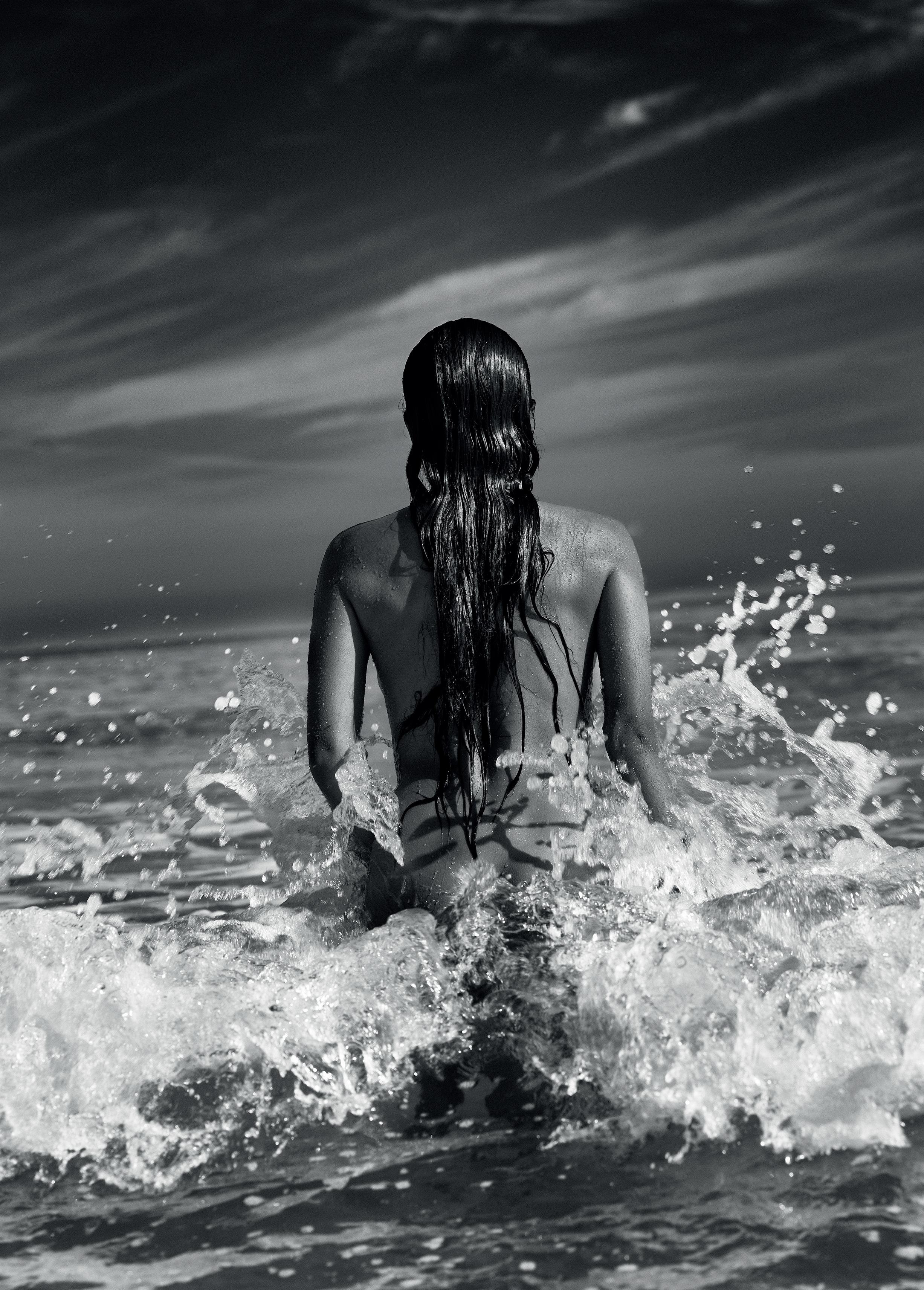
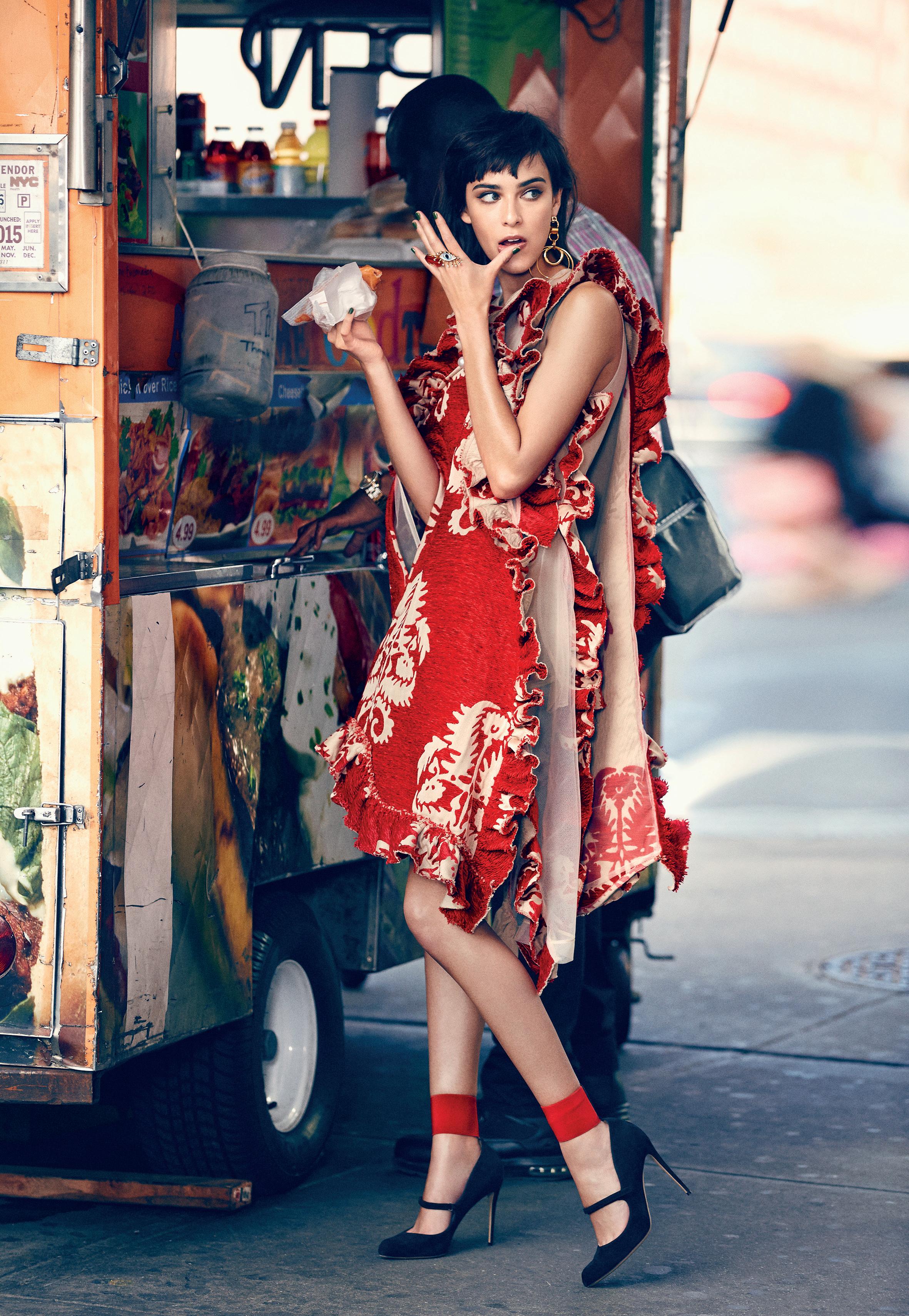
Anche se mi manca la qualità tattile del lavoro con la pellicola, ho pienamente abbracciato i vantaggi della fotografia digitale. Oggi utilizzo una fotocamera da 100 megapixel che mi consente di catturare immagini straordinariamente dettagliate che potevo solo sognare con la pellicola. Nel complesso, credo che la fotografia digitale abbia aperto nuove possibilità per i fotografi e ci abbia permesso di spingere i confini di ciò che è possibile nel nostro mestiere.
Per una rivista, generalmente un servizio fotografico è di 8/10 foto o pagine, come lo costruisci?
Prima di uno scatto, mi piace iniziare creando un mood board insieme allo stilista per stabilire una visione coerente per lo scatto. Durante le riprese, cerco di tenere a mente questa visione pur essendo aperto ad apportare modifiche se necessario.
Quando arriva il momento di modificare le foto, scelgo con cura le migliori 3 o 4 immagini che catturano l’essenza dello scatto, prendendo in considerazione aspetti diversi come ritratti, scatti a mezzo busto o a figura intera e diverse angolazioni. Quindi, lavoro con la rivista per determinare il layout migliore, tenendo conto del ritaglio e di quali immagini devono essere posizionate l’una di fronte all’altra per creare una diffusione visivamente piacevole. Nel complesso, il mio obiettivo è creare una storia fotografica avvincente che catturi l’essenza del soggetto o del tema.
Questa è una risposta alla tua domanda?
Cosa significa per te la moda? Ne segui qualcuno? Chi sono i tuoi stilisti preferiti?
Ho fondato la prima rivista internazionale di moda norvegese TIQUE, ero molto interessato alla qualità da bambino. Sono un tipo classico, e mi piace molto un look classico e sexy su una donna, puoi trovare questa donna in Italia, Parigi e New York. La moda è una forma di espressione di sé, un modo per trasmettere la propria personalità e un riflesso dei valori culturali e sociali. Comprende abbigliamento, accessori, trucco, acconciature e persino stili di vita. La moda è un’industria in continua evoluzione e in continua evoluzione, influenzata da vari fattori come tecnologia, politica, arte e media.
I fotografi che lavorano nel settore della moda sono responsabili di catturare e mostrare le ultime tendenze e stili. Lavorano a stretto contatto con modelli, designer e stilisti per creare immagini visivamente sbalorditive che trasmettono un messaggio o un’estetica particolare. In termini di seguire la moda, non è raro che i fotografi rimangano aggiornati sulle ultime tendenze e stili. Tuttavia, il loro obiettivo principale è catturare l’essenza del momento e creare immagini che siano senza tempo piuttosto che alla moda. Per quanto riguarda gli stilisti preferiti, questo può variare a seconda del gusto personale e delle esigenze del progetto. Alcuni famosi stilisti nel settore della moda includono Grace Coddington, Edward Enninful e Carine Roitfeld, solo per citarne alcuni. Ho lavorato molti anni con lo stilista Michael Dye, una Petra Middelthon, ora editor di Cheaf presso ELLE Norvegia.
Che consiglio daresti a un giovane che vorrebbe fare il fotografo?
Se sei un giovane che aspira a diventare un fotografo, ci sono diversi consigli che potrebbero esserti utili:
1.Impara gli aspetti tecnici della fotografia: per diventare un fotografo esperto, è essenziale comprendere gli aspetti tecnici della fotografia, come velocità dell’otturatore, apertura, ISO e illuminazione. Segui un corso o un workshop di fotografia per imparare le basi.
2.Vai in una scuola e diventa assistente di un fotografo che ammiri.
3.Pratica, pratica, pratica: come ogni abilità, la fotografia richiede pratica. Scatta più foto che puoi, sperimenta stili e tecniche diverse e impara dai tuoi errori.
4. Costruisci un portfolio: man mano che acquisisci esperienza e sviluppi il tuo stile, crea un portfolio del tuo lavoro migliore. Questo mostrerà le tue capacità a potenziali clienti e datori di lavoro.
5. Rete e collaborazione: la rete con altri fotografi e professionisti del settore può essere un ottimo modo per imparare dagli altri, ottenere visibilità e trovare opportunità di collaborazione e occupazione.
6. Sii creativo e corri dei rischi: la fotografia è una forma d’arte e la creatività è essenziale per distinguersi dalla massa. Non aver paura di correre rischi e sperimentare nuove idee.
7.Sviluppa uno stile personale: lo sviluppo di uno stile personale ti aiuterà ad affermarti come fotografo unico e riconoscibile. Questo può richiedere tempo e sperimentazione, ma ne vale la pena.
8. Rimani aggiornato con le tendenze e la tecnologia del settore: il settore della fotografia è in continua evoluzione ed è essenziale rimanere aggiornati con le ultime tendenze, attrezzature e tecnologia.
Ricorda che diventare un fotografo di successo richiede tempo, pazienza e duro lavoro. Continua a imparare, esercitarti e perseguire la tua passione e, alla fine, raggiungerai i tuoi obiettivi.
I tuoi progetti: a cosa stai lavorando?
“Attualmente sto lavorando a diversi progetti fotografici. Uno dei miei progetti in corso si chiama “Man Made Landscape”, che prevede la creazione di immagini artistiche principalmente da aree urbane e la combinazione di più esposizioni in un’unica immagine. Inoltre, ho recentemente iniziato a lavorare su un progetto incentrato sulle auto da corsa, che ho intenzione di esporre nel 2024.”
Some photographers started out as assistant, others photographing their own children for example, how did you start your career?
My career in fashion photography began in a unique way. I was educated in the graphic business and started Norway’s first international fashion magazine, TIQUE, in 1983. As the editor of the magazine, I hired some of the best fashion photographers of the time, including Bill King, Guy Bourdin, Terence Donovan, and Knut Bry, to shoot for our publication.
I had the opportunity to work closely with these talented photographers, and it was through this process that I learned the art of fashion photography. I like to say that my photo education was the most expensive one, as I was essentially assisting these top photographers on their shoots, and learning from their techniques and methods.
Do you consider yourself a fashion photographer?
Yes, I certainly consider myself a fashion photographer. In fact, I started out my career exclusively shooting fashion photography. I remember my first professional shoot in
Moscow with model Elisabeth Nottoli, where we were shooting on the Red Square just two hours before Mathias Rust landed his Cessna Airplane on May 13th, 1987. As my career progressed, I had the opportunity to work with iconic models such as Claudia Schiffer and Helena Christensen in 1990, which helped to elevate my profile as a fashion photographer internationally. While I have expanded my portfolio to include other types of photography over the years, fashion remains my passion and an area of expertise.
Today you are a well-known photographer for your technical ability, your compositions and also for outstanding of light. You have travelled the world on great photo adventures and captured motifs from both skyscrapers and natural phenomena.
Do you think one needs to have a gift to become a photographer?
While some may argue that a natural gift or talent is necessary to become a photographer, I personally believe that technical skill, composition, and an understanding of light are essential for creating high-quality images. For me, having good technical skills is of utmost importance as it enables me to create images with a more dimensional quality. I learned my technique by studying Ansel Adams, a great landscape photographer, and the Zone system he developed. This has given me a deeper understanding of the art and science of photography. In addition to technical ability, composition and light are also crucial elements of successful photography. While it’s possible to study various techniques, I believe that a good composition comes from within - it’s about having a unique perspective and being willing to think outside the box. Ultimately, I believe that anyone can become a great photographer with the right mindset, dedication, and willingness to learn and experiment.
Is there a difference between photographing a model and or a well-known character such as an actor or a politician?
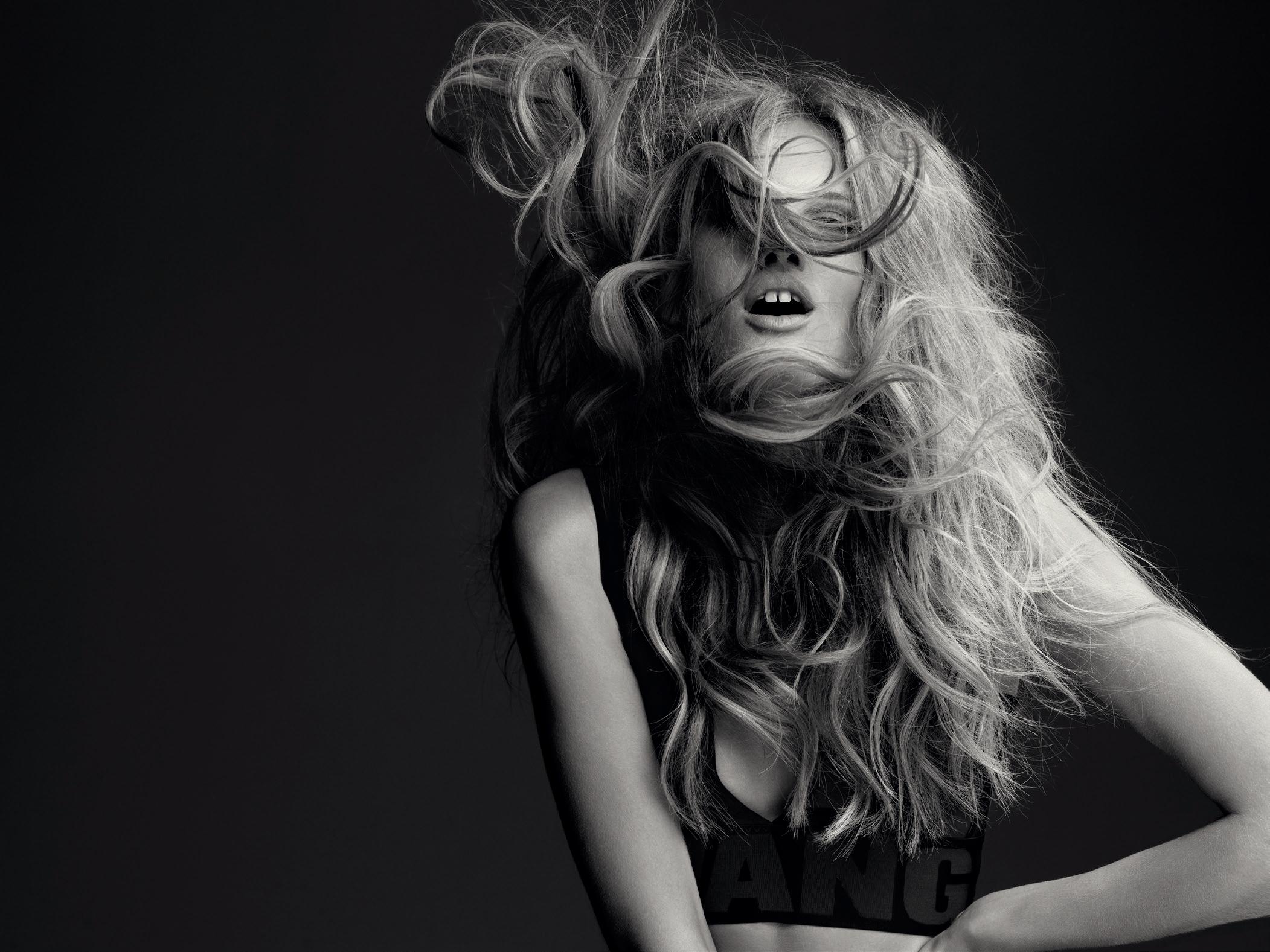
There can be some differences when photographing a model versus a well-known character such as an actor or politician. When photographing models, they are often very experienced and can be helpful in pushing the photographer to be more creative in a shoot. Additionally, working with a stylist is important in fashion photography as they can help to bring together a cohesive story and create visually striking images. On the other hand, when photographing portraits of actors or interesting people, it’s important to get to know the person beforehand in order to create an image that captures their essence. Having an idea in mind before the shoot is important, but being open to going with the flow is also crucial.
I have had the opportunity to work with Game of Thrones actor Kristofer Hivju several times, and for one shoot, he wanted to do an old-school photo shoot using a 15-second exposure to create a different look. To achieve this, I used an 8 x 10 Sinar camera, and the result was a unique and compelling portrait that captured Hivju’s personality in a creative way.
You have traveled all over the world. What have these trips brought you?
Traveling all over the world has been an incredible experience for me both personally and professionally. As a photographer and director, I have been fortunate enough to capture images of breathtaking landscapes, diverse cultures, and interesting people from all corners of the globe. These trips have broadened my perspective and allowed me to see the world in new and exciting ways. They have also presented unique challenges, such as navigating cultural differences and language barriers, which have helped me to grow both as an artist and as a person.
Perhaps most importantly, my travels have taught me the importance of connection and empathy. By meeting people from different backgrounds and cultures, I have been able to learn about their experiences and understand their perspectives. This has not only enriched my work as a photographer but has also given me a greater appreciation for the diversity and complexity of the world we live in. Overall, I feel incredibly fortunate to have had the opportunity to travel the world and capture its beauty through my lens. It has been an unforgettable experience that has enriched my life in countless ways.
We went digital a long time ago. What important changes have you noticed, having used film and Polaroid films for years?
The transition from film to digital photography has been a significant change in the industry, and one that I have experienced firsthand. Having used film and Polaroid films for many years, I was initially hesitant to make the switch to digital. However, as the quality of digital cameras improved, I knew it was time to make the change. The most notable difference between film and digital photography is the instant feedback that digital cameras provide. With film, you had to wait for the film to be developed to see the results, whereas with digital, you can immediately see the image on the camera’s screen. This has allowed me to make adjustments in real-time, and experiment with different techniques and lighting setups.
Additionally, digital cameras have opened up new possibilities for post-production editing, allowing for more creative control over the final image. However, it’s important to remember that even with all the technology available, a great photograph still comes down to the photographer’s eye and skill.
While I do miss the tactile quality of working with film, I have fully embraced the advantages of digital photography. Today, I use a 100-megapixel camera that allows me to capture stunningly detailed images that I could only dream of with film. Overall, I believe that digital photography has opened up new possibilities for photographers and has allowed us to push the boundaries of what’s possible in our craft.
For a magazine, generally a photographic service is 8/10 photos or pages, how do you build it?
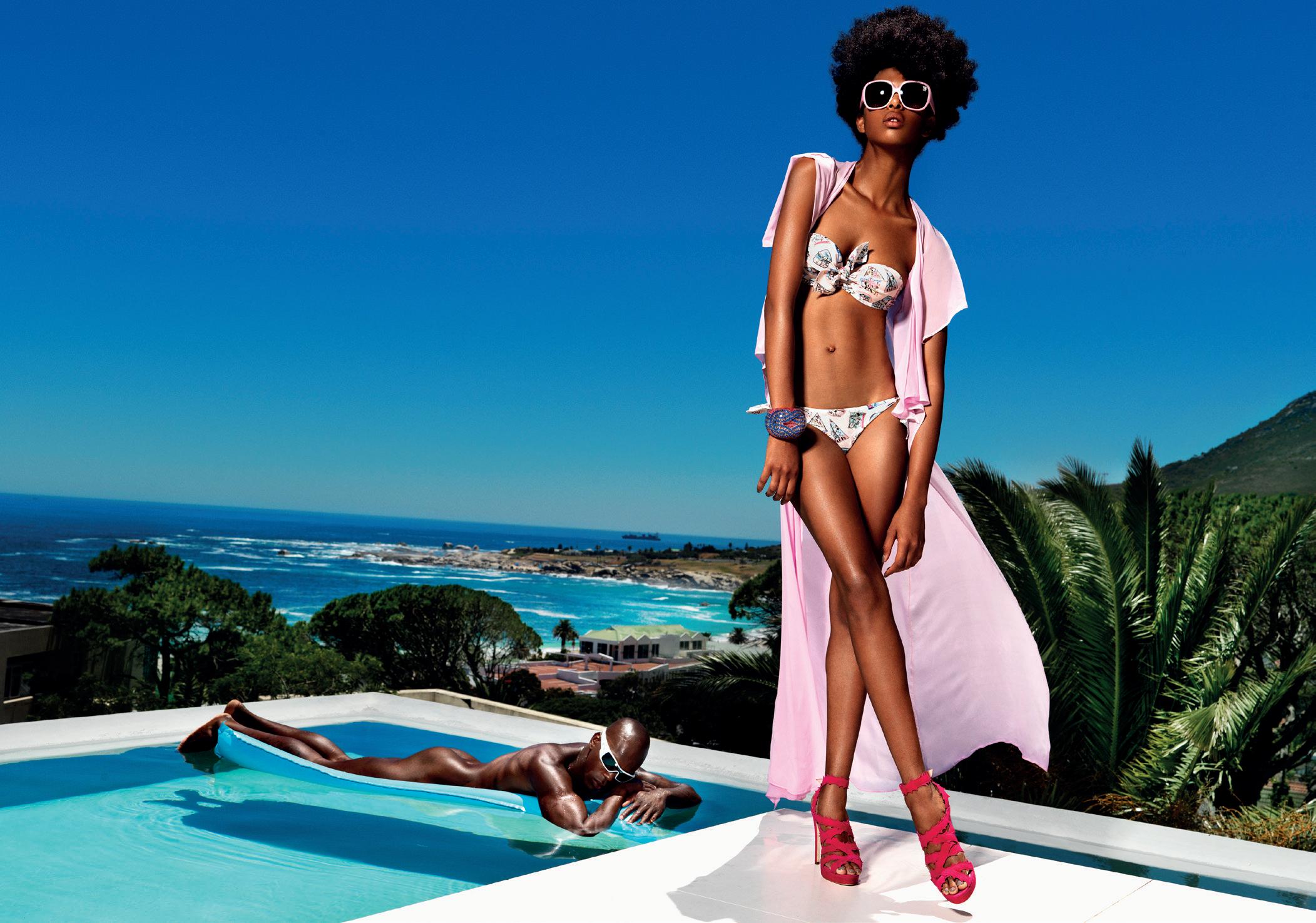
Before a shoot, I like to start by creating a mood board together with the stylist to establish a cohesive vision for the shoot. During the shoot, I try to keep this vision in mind while being open to making adjustments as necessary. When it comes time to edit the photos, I carefully choose the best 3 or 4 images that capture the essence of the shoot, taking into consideration different looks such as portraits, half or full-length shots, and different angles. Then, I work with the magazine to determine the best layout, taking into account cropping and which images should be placed opposite each other to create a visually pleasing spread. Overall, my goal is to create a compelling photographic story that captures the essence of the subject or theme. Is this an answer to your question?
What does fashion mean to you? Do you follow any?
Who are your favorite stylists?
I started Norways first International fashion magazine TIQUE, I was very interested in Quality as a young kid. I am a classic type, and I like very much a classic sexy look on a woman, you can find this woman in Italy, Paris and New York. Fashion is a form of self-expression, a way to convey one’s personality, and a reflection of cultural and societal values. It encompasses clothing, accessories, makeup, hairstyles, and even lifestyles. Fashion is an ever-changing and evolving industry, influenced by various factors such as technology, politics, art, and media. Photographers who work in the fashion industry are responsible for capturing and showcasing the latest trends and styles. They work closely with models, designers, and stylists to create visually stunning images that convey a particular message or aesthetic. In terms of following fashion, it’s not uncommon for photographers to stay up-to-date on the latest trends and styles. However, their primary focus is on capturing the essence of the moment and creating images that are timeless rather than trendy. As for favorite stylists, this can vary depending on personal taste and the project’s requirements. Some popular stylists in the fashion industry include Grace Coddington, Edward Enninful, and Carine Roitfeld, to name a few. I have worked many years with Stylist Michael Dye, an Petra Middelthon, now editor in Cheaf at ELLE Norway.
What advice would you give to a young person who would like to be a photographer?
If you’re a young person who aspires to become a photographer, there are several pieces of advice that could be helpful for you:
1.Learn the technical aspects of photography: to become a skilled photographer, it’s essential to understand the technical aspects of photography, such as shutter speed, aperture, ISO, and lighting.
Take a photography course or workshop to learn the basics.
2.Go to a school and be an assistant for a photographer you look up to.
3.Practice, practice, practice: like any skill, photography requires practice. Take as many photos as you can, experiment with different styles and techniques, and learn from your mistakes.
4. Build a portfolio: As you gain experience and develop your style, create a portfolio of your best work. This will showcase your abilities to potential clients and employers.
5.Network and collaborate: Networking with other photographers and professionals in the industry can be an excellent way to learn from others, gain exposure, and find opportunities for collaboration and employment.
6. Be creative and take risks: Photography is an art form, and creativity is essential to stand out from the crowd. Don’t be afraid to take risks and experiment with new ideas.
7.Develop a personal style: Developing a personal style will help you establish yourself as a unique and recognizable photographer. This can take time and experimentation, but it’s worth the effort.
8.Stay up-to-date with industry trends and technology: The photography industry is constantly evolving, and it’s essential to stay up-to-date with the latest trends, equipment, and technology.
Remember that becoming a successful photographer takes time, patience, and hard work. Keep learning, practicing, and pursuing your passion, and eventually, you’ll achieve your goals.
Your projects: what are you working on?
“I am currently working on several photography projects. One of my ongoing projects is called “Man Made Landscape,” which involves creating art images mainly from urban areas and combining multiple exposures into a single image. Additionally, I have recently started working on a project focused on racing cars, which I plan to exhibit in 2024.”
